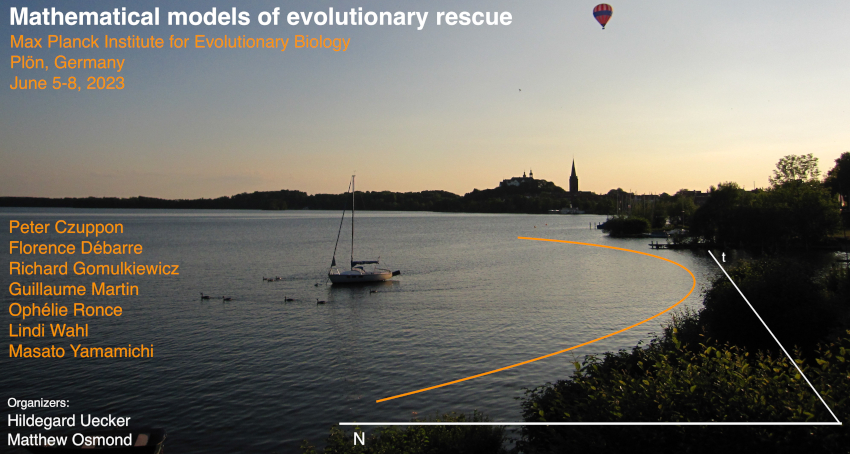Speaker
Description
Rapid and widespread environmental change worldwide has raised concern about the ability of natural populations to rapidly adapt to novel conditions. Ancestral population phenotypes and population dynamics should predict successful evolutionary rescue (and adaptation) - but which specific phenotypic traits and demographic events matter? Might different founding traits and demographic events explain adaptation to different environments? To answer these questions, we experimentally evolved 10 distinct wild-collected populations of the generalist red flour beetle Tribolium castaneum. From each population, we founded three replicate laboratory lines, selecting for performance on two resources - wheat flour (optimal ancestral resource) and corn (highly suboptimal novel resource). We measured a range of fitness-related traits in the ancestral populations and collected census data every generation for 70 generations during and after evolutionary rescue (vs the control). We find that adaptation to corn versus persistence in wheat flour involves contrasting population dynamics that are correlated with distinct ancestral and demographic parameters. While competitive success under high density predict population performance in wheat flour, rapid development and high reproductive success predicts rescue and population performance in corn flour. Early dynamics also predict subsequent recovery in corn, suggesting that demographic processes are important during and after rescue. Studying the real-time adaptive evolution of these lines across different habitats have allowed us to test a range of hypotheses that have not been tested in a single experimental system. These results bring us closer to making predictions about the adaptive potential of wild populations during major changes in their natural environment.

